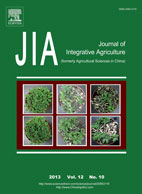|
|
Soil Microbial Community Composition During Natural Recovery in the Loess Plateau, China
XIAO Lie, LIU Guo-bin, XUE Sha,ZHANG Chao
2013, 12(10):
1872-1883.
DOI: 10.1016/S2095-3119(13)60399-8
This study aimed to determine the characteristics of soil microbial community composition and its relationship with soil chemical properties during natural recovery in the Loess Plateau. The soil microbial community composition was analyzed by comparing the soil microbial phospholipid fatty acids (PLFAs) of eight croplands abandoned for 1, 3, 5, 10, 13, 15, 20, and 30 yr in the Dunshan watershed, northern Loess Plateau, China. The results showed that soil organic carbon, total nitrogen, soil microbial biomass carbon, and soil microbial biomass nitrogen significantly increased with the abandonment duration, whereas the metabolic quotient significantly decreased. The Shannon richness and Shannon evenness of PLFAs significantly increased after 10 yr of abandonment. Gram-negative, Gram-positive, bacterial, fungal, and total PLFAs linearly increased with increased abandonment duration. Redundancy analysis showed that the abandonment duration was the most important environmental factor in determining the PLFA microbial community composition. The soil microbial PLFAs changed from anteiso- to iso-, unsaturated to saturated, and short- to long-chain during natural recovery. Therefore, in the Loess Plateau, cropland abandonment for natural recovery resulted in the increase of the soil microbial PLFA biomass and microbial PLFA species and changed the microbial from chemolithotrophic to a more heterotrophic community.
|
